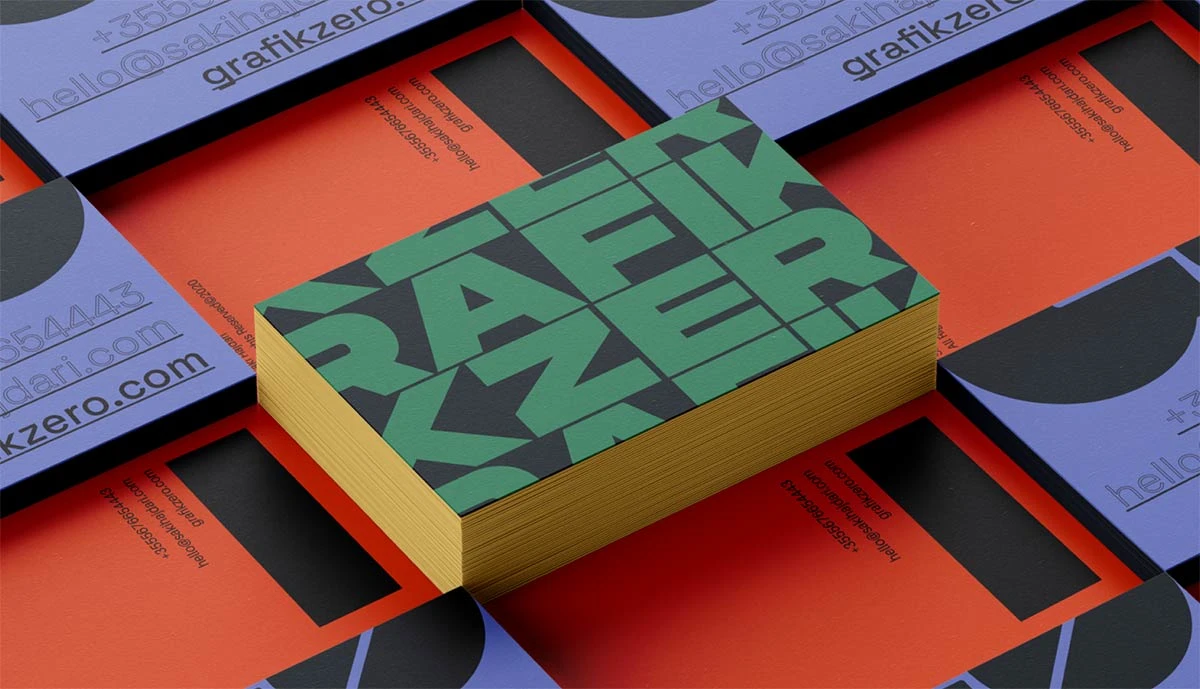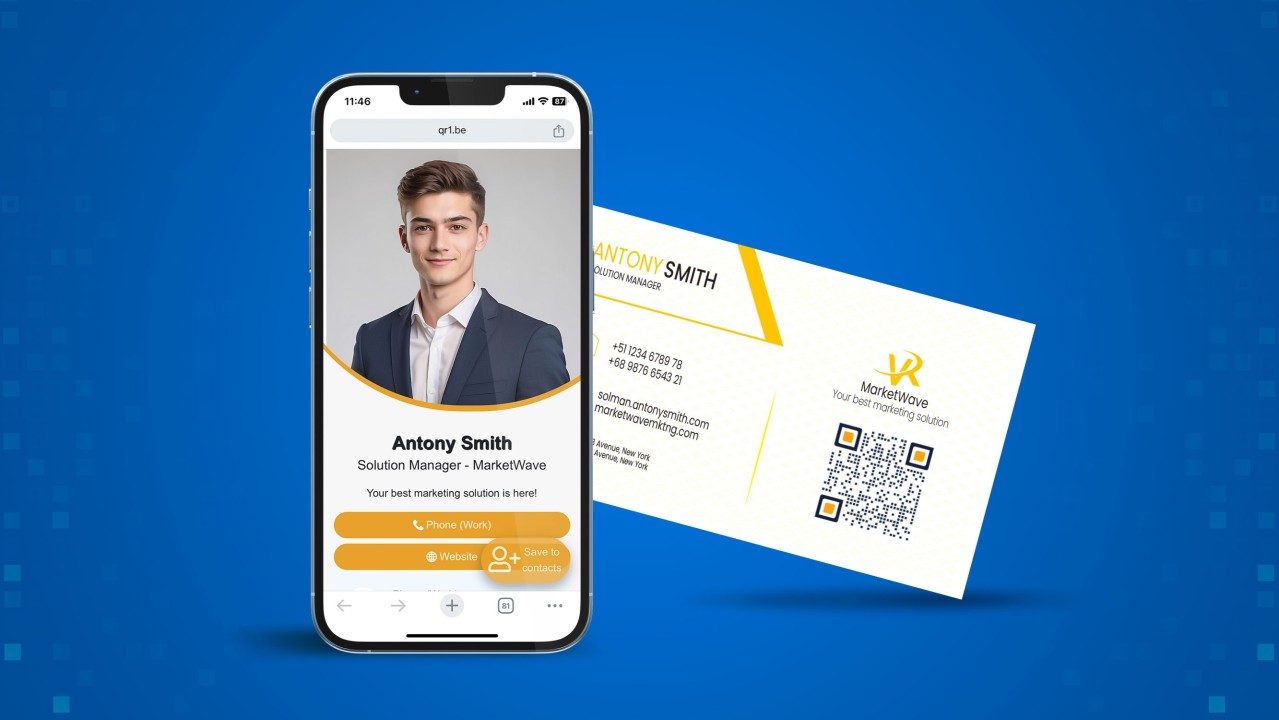.svg)

Let’s be honest, the humble business card isn’t aging well. You hand them out at events, they end up buried in someone’s bag (or worse, the recycling bin), and before long, you’re reordering a new batch because your job title changed or you ran out again. Meanwhile, the world has gone digital, remote, and paperless, yet we’re still swapping tiny rectangles of cardstock like it’s 1995. From NFC-enabled cards that sync to your CRM, to QR codes and virtual profiles that update in real time, these tools can help you stand out, impress clients, and save serious money in the long run. In this guide, we’ll walk you through the 10 best business card alternatives that make networking effortless, memorable, and future-proof.
Mobilo’s Digital Business Card brings those options together in one place so you can share contacts instantly, keep profiles up to date, capture leads, and reduce printing costs and waste.

Exchanging business cards at an event, only to realize you’ve misplaced them or your details have changed. As we move through 2025, the way we share professional information is shifting fast, and you may be asking what the best alternatives to printed business cards are.
Digital business cards are emerging as the modern standard, with 37 percent of small businesses and 23 percent of individuals using them to build connections, according to industry benchmarks and public case reports from enterprise rollouts.
A standard 3.5-by-2-inch card offers space for a name, title, and one or two phone numbers. That forces you to compress identity into static lines.
You cannot include a portfolio, a video demo, multiple social profiles, links to case studies, or versioned job history on that small rectangle. A digital vCard, a mobile business card app, or an NFC business card carries rich media, multiple links, live scheduling, and instant updates to contact records.
Around 100 billion business cards are printed every year, consuming the equivalent of roughly 6 million trees. On top of that, studies show 88 percent of paper business cards are thrown away within a week of being received.
Those numbers point to large-scale waste from a low-return activity. Sustainable networking and digital contact sharing reduce printing demand and lower the carbon and material footprint from traditional business cards.
People change companies, titles, phone numbers, and email addresses. Each change often forces a full reprint run and disposal of old cards. Companies that switch to electronic business cards, digital contact cards, or cloud-based mobile cards report reductions of up to 90 percent in printing and distribution costs. For a sales team or a conference exhibitor, those savings compound quickly.
The paper gives no feedback. You cannot tell if a recipient saved your contact, visited your website, or shared your card. Digital alternatives offer click analytics, lead capture, CRM integration, and open-tracking for follow-up. That turns a passive exchange into measurable engagement and improves pipeline management for sales and marketing teams.
The pandemic pushed people away from close contact and from handling paper. After 2020, many organizations cut traditional business card printing by about 70 percent and adopted contactless options such as QR codes and NFC business cards. Mobile-friendly electronic business cards reduce touch points and allow instant connection with a simple tap or scan.
Paper cards create clutter on desks and in drawers, and often get lost after an event. They cannot integrate with contact management and CRM systems, and they do not support instant calendar booking or password-protected content.
Smart business cards, contactless QR cards, virtual cards, and networking apps add features such as analytics, lead-capture forms, team links, and single-click dialing or emailing that paper cannot match.
Options include digital business card apps that share vCards, QR code-based landing pages, NFC business cards that write contact data to phones, and cloud-based virtual card suites with CRM sync, analytics, and team sharing. Each option varies in ease of use, privacy, integration with contact management, and branding capability.

Pocket square business cards are functional fashion accessories that double as shareable business cards. Fold them into a stylish pocket square, and you have both a fashion statement and a memorable networking tool.
At a networking event, while everyone hands out plain rectangular cards, you can pull out a pocket square that reveals your contact information. Nearly 39% of people say they won’t do business with someone who hands out a cheap-looking card. With pocket square business cards, you’re not just sharing contacts; you’re showcasing creativity, quality, and style.
Etsy, Zazzle, Redbubble, Moo
Conductive ink business cards use special ink that conducts electricity, enabling interactive features like lights, video triggers, or digital content when touched. They combine tactile technology with creative engagement.
Touch your logo on the card to illuminate it, or tap it with an NFC-enabled phone to reveal a digital profile or demo. With the conductive inks market growing rapidly, these cards are an innovative way to impress clients.
Where to get them: Tekra, Instructables, Printful
Durable cards made of metal that double as a bottle opener, combining practicality with networking.
Helping someone open a bottle with your card instantly creates a memorable connection. Functional promotional items like this have retention rates up to 79%.
Where to get them: CustomMade, Fast Printing, Aura Print
Custom Lego mini-figures replace traditional cards, featuring your likeness or branding, with contact info printed on the figure.
Instead of a paper card, recipients get a display-worthy figure. Unlike traditional cards, Lego figures stay on desks or shelves, keeping your brand visible.
Lego website (limited availability)
A business card with a USB drive embedded to showcase presentations, videos, or a digital portfolio.
Instead of handing a paper card, share a device that demonstrates your work. First impressions with rich content can boost brand loyalty by 48%.
Flashbay, Logotech
Eco-friendly cards embedded with seeds. Once planted, they grow into herbs, flowers, or vegetables.
Clients plant your card, connecting your brand with sustainability and growth qualities 66% of consumers value.
Pinecone, Seed Paper, Botanical PaperWorks
Crafted from chocolate, cookies, or pasta, these cards are both branding and snackable.
Give a client a chocolate square branded with your logo; it’s memorable, enjoyable, and promotes brand recall.
Edible Print Company, Frostino, Custom Edibles
Eco-friendly and stylish cards made from durable, lightweight cork.
Cork’s natural texture makes your card tactile and memorable, while remaining water-resistant.
VistaPrint, Etsy, Moo
Cards with magnets stay visible on metal surfaces, keeping your brand top-of-mind.
Unlike paper cards, your contact info remains in sight on fridges or filing cabinets.
VistaPrint, Zazzle, Custom Magnets Direct
Snackable cards like cookies, chocolate bars, or popcorn with QR codes. Perfect for food, lifestyle, or creative brands.
Handing out a chocolate square with a portfolio QR code creates an experience, not just a card.
Where to get them: Edible Print Company, Custom Edibles
Instead of exchanging cards, collect contact information directly into a CRM, streamlining follow-ups and ensuring no leads are lost.
Use Copper’s Business Card Scanner to capture contacts instantly and add notes for context.
Copper, HubSpot, Salesforce
AI-powered cards provide chatbots to answer FAQs, share product info, schedule meetings, and track analytics.
ChatInsight, VCard AI
A keychain featuring your logo and QR code that links to a digital business card.
Custom keychain makers, Etsy, Vistaprint
Use merchandise like mugs, bags, or hats as business cards. Works as both branding and marketing material.
Vistaprint, Custom Ink, Zazzle

Ask five focused questions, answer them fast, then pick one solution that matches most answers.
Answer these, and you move from uncertainty to a clear choice for digital business cards, NFC cards, QR digital cards, or physical promo items.
Creative fields require a mini portfolio more than a plain name and number. Show a short video, portfolio landing page, or include a small print sample of your work. Corporate sectors want formality and easy CRM import. Use a classic printed business card, along with a vCard or a LinkedIn QR code, to enable contactless sharing.
Friendly, helpful brands do better with coupons, samples, or a small tool embedded in the card.
A formal business card still proves professionalism in meetings and events. Add a creative alternative to stand out and give immediate value. Pairing a printed card with a digital business card, NFC-enabled card, or promotional sample meets both expectations and modern sharing habits.
These mini versions make your service tangible and show confidence in its usefulness.
Include trial codes, discount coupons, or small practical tools in or attached to your card. A promo code on a card encourages immediate action. A seed packet for a landscaping company creates goodwill. A USB business card with a one-minute demo makes it easy to evaluate your work.
Give different cards to different audiences. Use unique QR codes or PURLs to track which card led to contact. Run simple A/B tests at events, like one card with an NFC tap and one with a printed coupon.
Choose from contactless and digital tools, such as NFC cards that tap to share a vCard, QR codes to a mobile landing page, virtual business card apps, smart cards with embedded files, wearable tech that shares social media links, USB business cards, and PURL cards that create a personal landing page. Include clear CTAs so recipients know whether to scan, tap, or visit a link.
Keep the message single-minded. Include one call to action per card. Use legible fonts and a high contrast layout for QR scanning. If you add a QR code, test scanning from printed surfaces and from screens.
Use different QR codes or short PURLs for each card batch to measure performance. Use sturdy materials when you expect repeat handling, and inexpensive stock when you will hand out many.

Mobilo replaces paper cards with a smart digital business card system that exchanges contact details instantly. Tap an NFC card, scan a QR code, or send a link and contact info moves to your prospect’s phone as a vCard.
The exchange runs through mobile, electronic, and virtual business cards that record every interaction for follow-up. Try a tap or a scan and watch the contact appear in your system.
Teams using Mobilo report up to 10x more leads at events because capture becomes friction-free. Contactless business cards and QR code business cards speed exchanges. Badge scanning and mobile business cards capture attendee data in seconds. Field teams leave the venue with clean contact lists ready for outreach, not stacks of unread paper cards.
Mobilo enriches raw contact data with company, title, industry, and signals that help qualify prospects. It then scores each lead against your ideal customer profile so reps spend time on the best opportunities.
This leads to enrichment, and prospect scoring reduces manual research and speeds pipeline building. Your reps get prioritized leads with context for the following outreach.
Data sync happens automatically. Mobilo connects to Salesforce, HubSpot, and other CRMs, so every contact captured by NFC cards, QR code business cards, or the networking app lands in the CRM your team uses.
The platform supports integrations through Zapier and native connectors, routing leads to the right owner, and triggering follow-up sequences. No more lost contacts or manual imports.
Sales teams hand out NFC cards that tap and transfer info. Marketing teams create QR code business cards for booths. Leadership shares virtual business cards in email signatures or on LinkedIn.
HR uses mobile business cards at recruiting events. Each use case replaces paper business cards with a consistent, trackable contact capture process that feeds lead management and analytics.
Mobilo provides event reports, engagement metrics, and conversion tracking so you can see which interactions turned into meetings and pipeline. Lead-capture analytics show who clicked which links, who visited a profile, and which cards drove the most qualified prospects. Use that data to refine outreach sequences and improve conversion rates.
Over 59,000 companies use Mobilo to move from paper to contactless networking and better lead capture. Book a demo today and get your first 25 cards free —valued at $950.